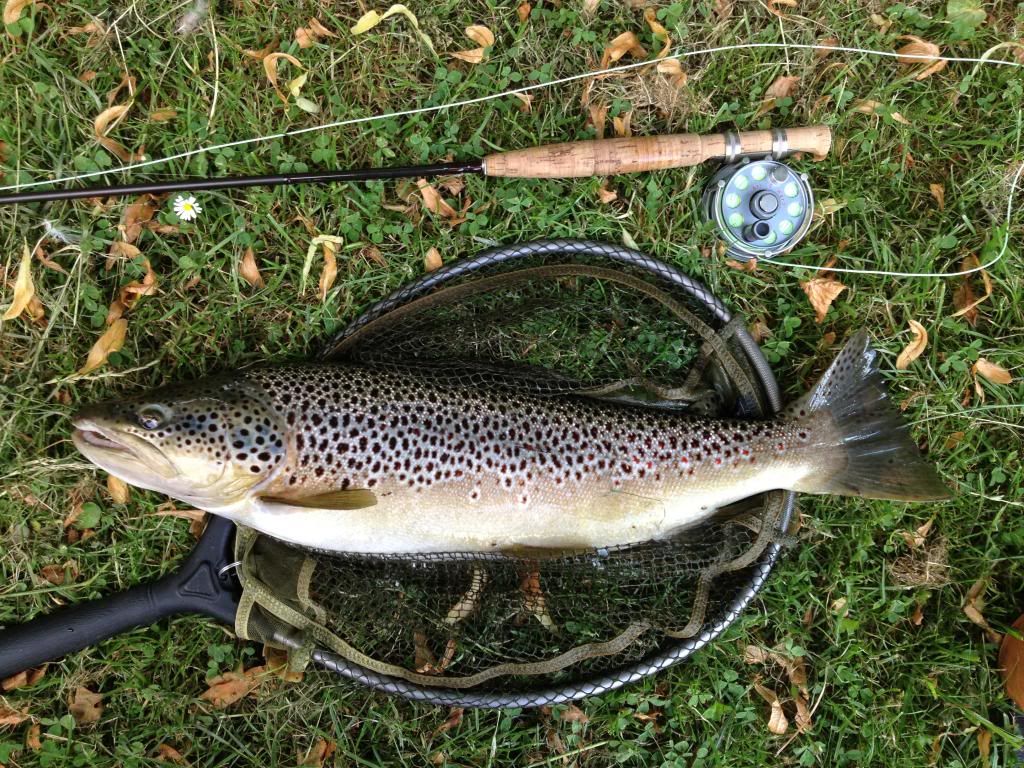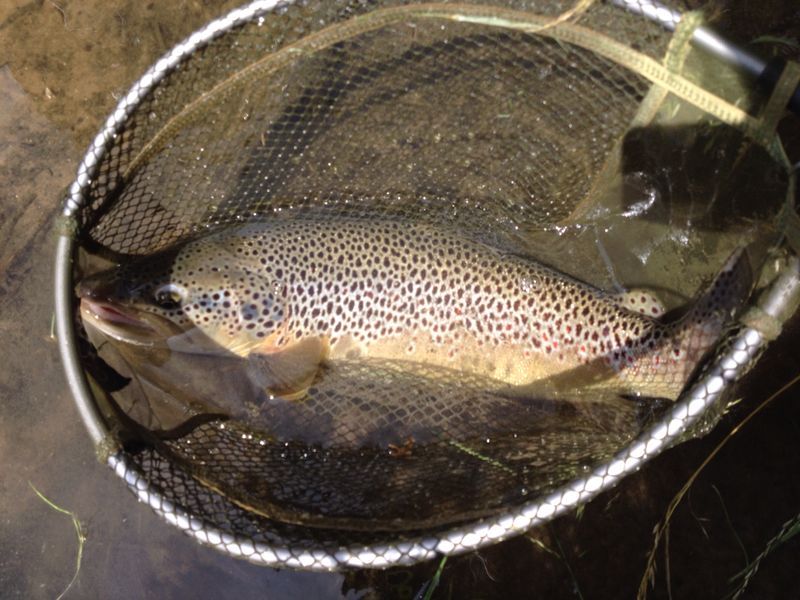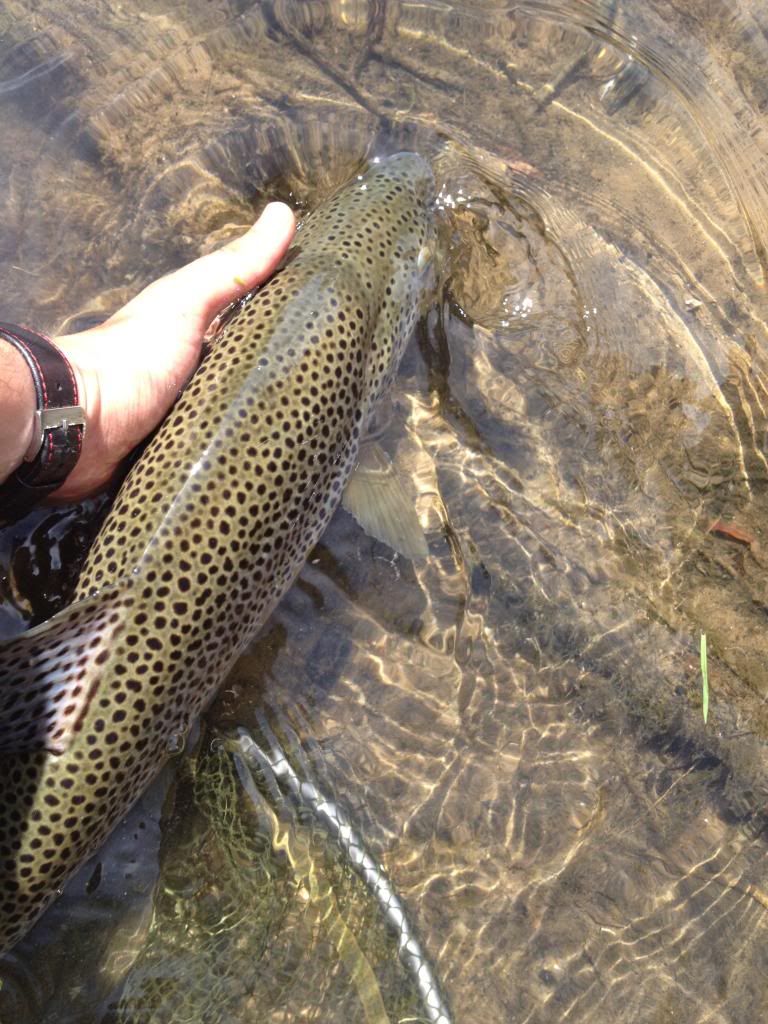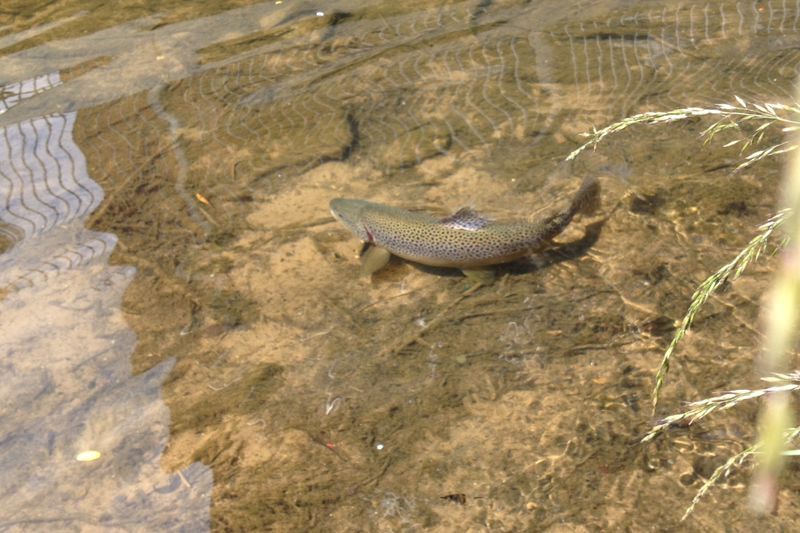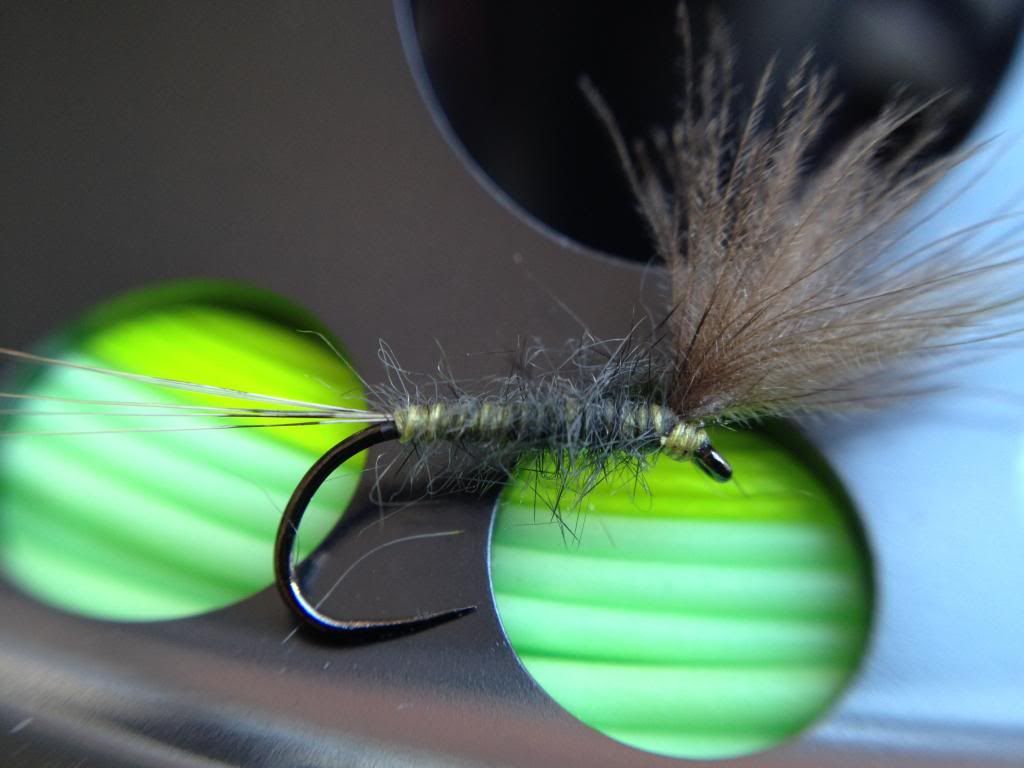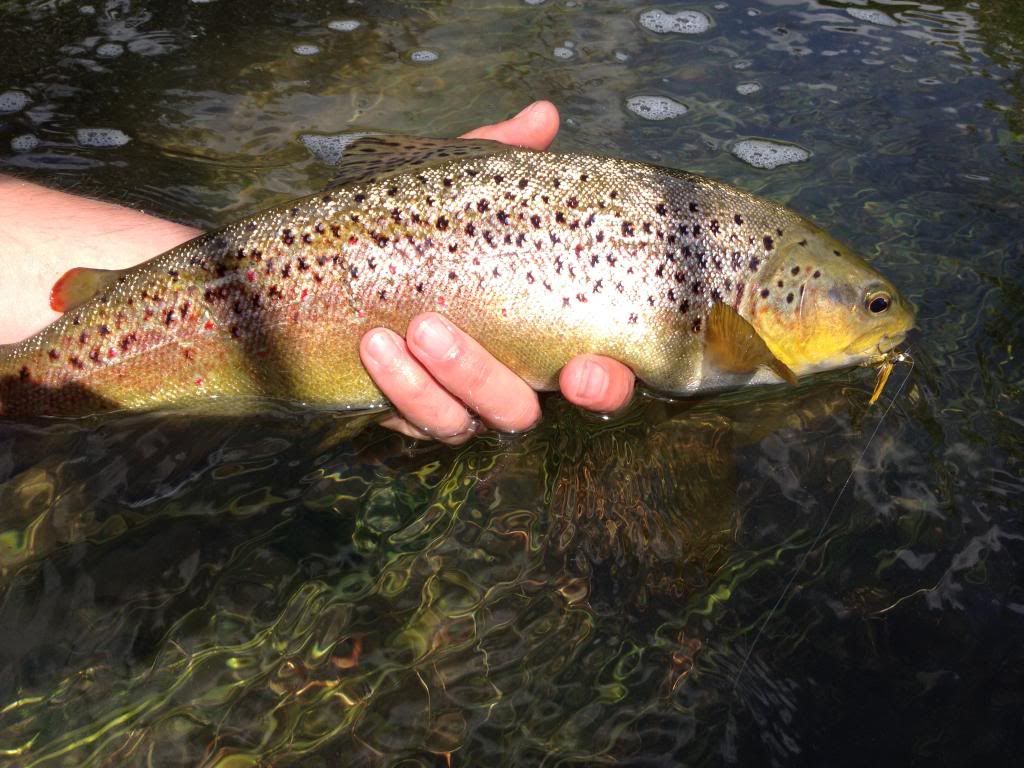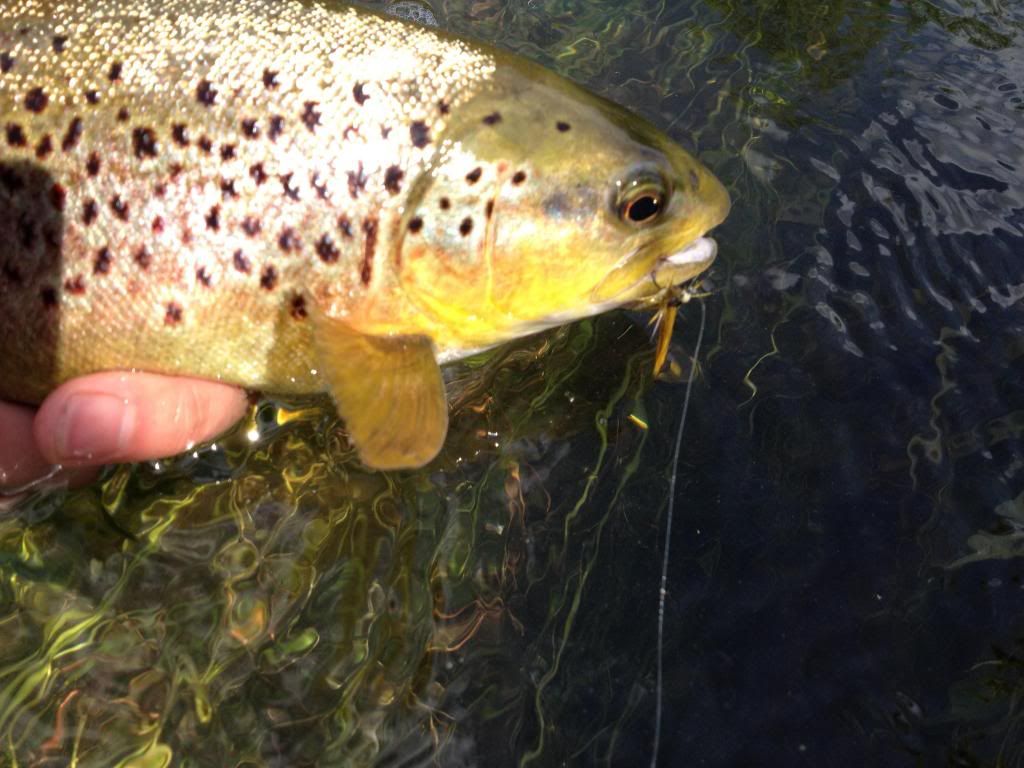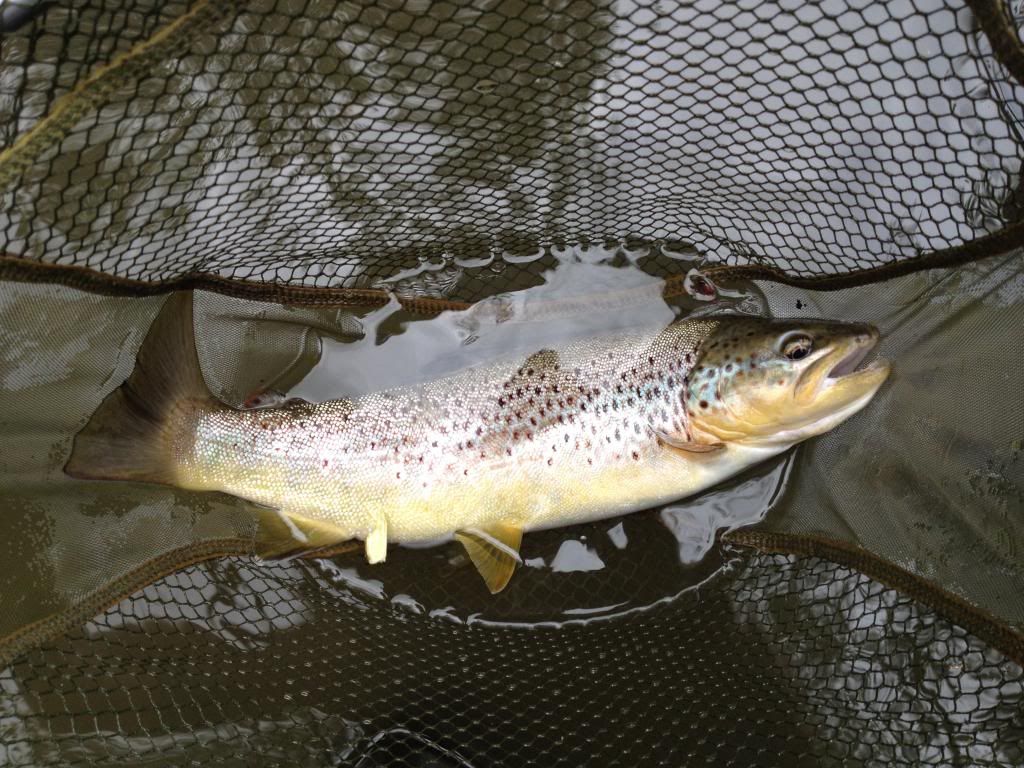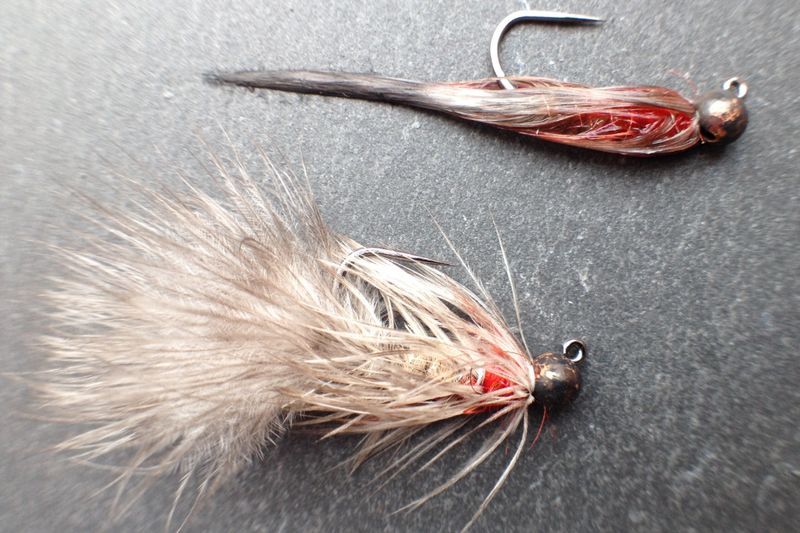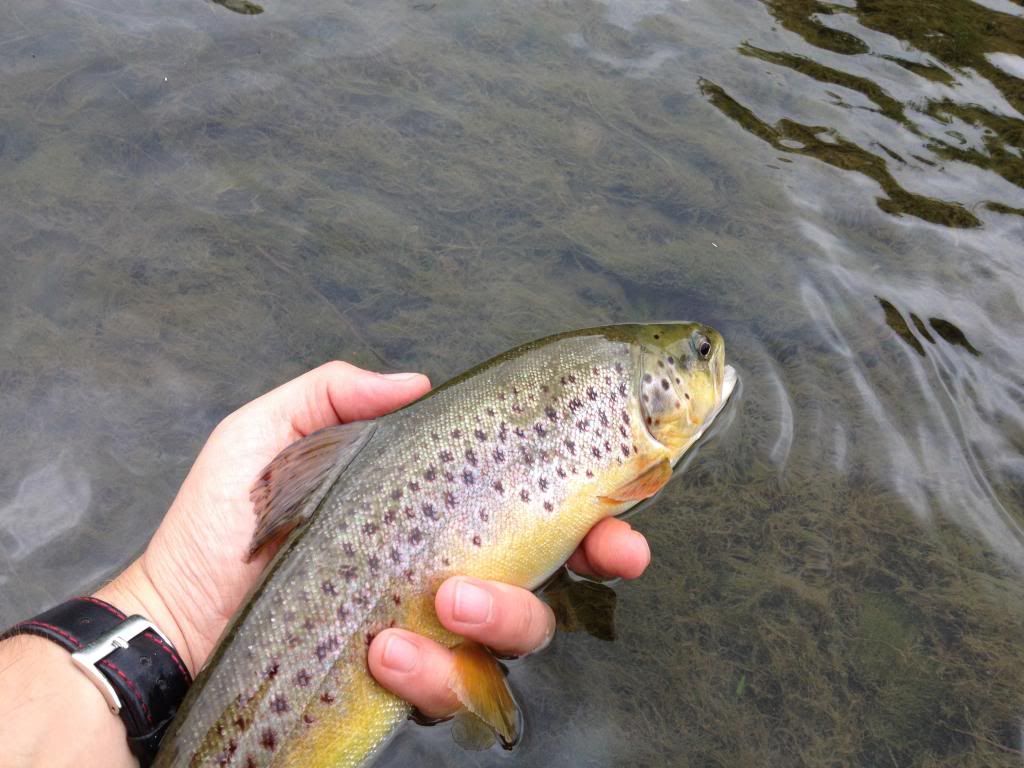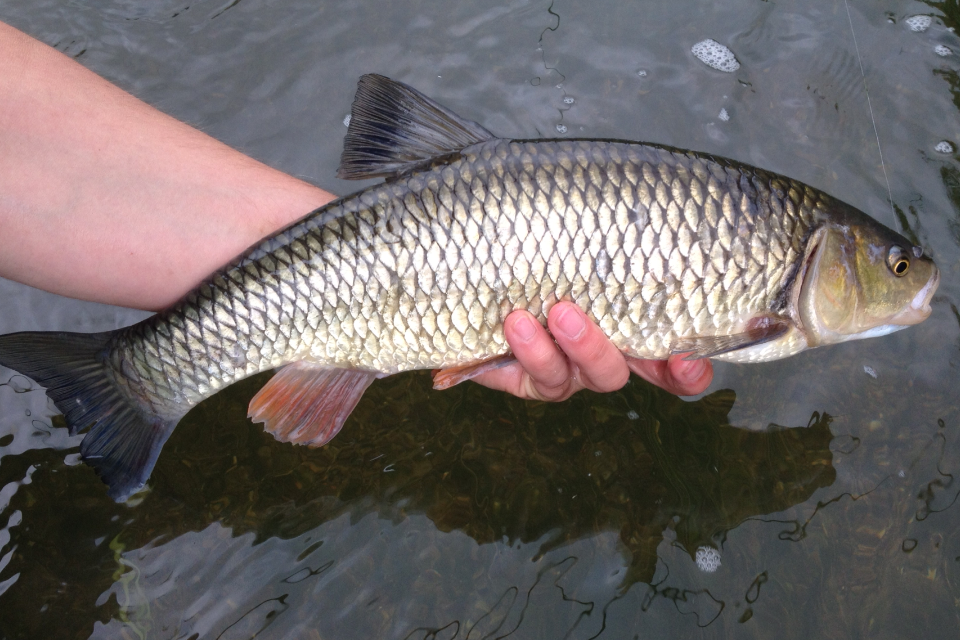Surprisingly - especially to myself - I only managed one short afternoon session during the mayfly hatch. A bad set of shifts one week and a set of nights the following, saw me pretty much missing out on the best of the action; stark contrast to last year, where I had a few good sessions and one absolutely amazing afternoon, where I had a dozen trout, none smaller than a pound and a quarter.
The afternoon I had was cut short by a vicious thunder storm; although I did catch a handful of fish, including a rainbow that I caught twice in the space of an hour barely twenty-five yards apart.
 |
| One of only about half a dozen trout caught on a dry mayfly this year |
By the time my rest-week after my nights came in the second week of June the hatch was almost over; those few mayfly that did hatch were largely ignored. Three solid days of fishing gave me opportunity not only to try new areas, but also to try new methods and a chance to have some company.
The first days fishing arrived and I had a plan. A newly acquired Hends Camou leader was rigged up onto a full spool of backing on my new Ari'T Hart reel; that's right, a spool just for a French leader. The new reel had a couple of immediate benefits, the spare spool being a major one, but also the extra weight the Ari had over my Lamson made holding a 10ft rod on a stretched arm much more comfortable.
I decided to fish the urban stretch of the river; this was because I had a forum member coming to join me at lunchtime to fish with me in the afternoon. I walked down to what would be considered the bottom of the urban stretch. A reasonable sized weir was my starting point, it is open and had the necessary flow I felt needed in the given conditions. I have caught fish here before, nothing substantial or a great number, but certainly worth a try.
With it being my first time fishing with a French leader I opted to use flies that held a bit of weight. Having fished a few times with the leader I now have no doubt that small, light flies can be cast, but at that time I wanted to be certain the leader would turn over. Of course fly choice was simple, what else but a couple of size 12, cream bodied JP pupa with 2mm copper tungsten beads.
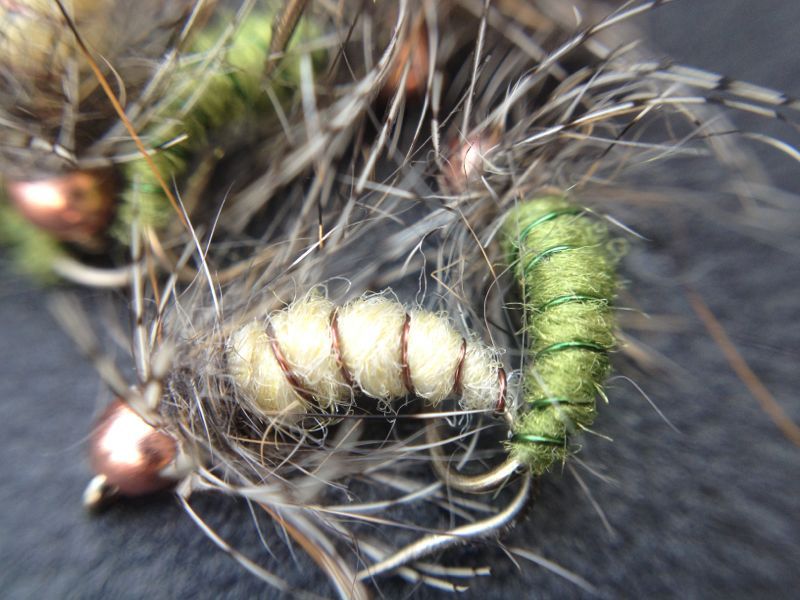 |
JP caddis pupa, size 12 with a 2mm copper tungsten bead with a cream body,
by far my most successful fly at the moment |
It took a little while to get used to casting without a fly-line. Slowly I fished up the flow heading towards the white-water. After five minutes or so I caught a smallish trout of around 8", it wasn't until I started getting to the faster flow close to the weir sill that I caught a much bigger fish. This trout fought really hard, much harder than its size would suggest; once netted the fish measured just over 13".No more fish came from that weir, which is fairly typical from previous experience.
Working my way upstream I tried a small run under some trees, I fished this by casting above the trees and letting the flies run underneath. I caught a roach and grayling before moving on.
Finally I reached the pool I wanted to fish. I fished this pool in April using the duo method and caught a surprising number of fish of all sizes. This time it was much the, I caught quickly and up the full length of the pool. The fish ranged from 4" to 14", it was great to see such a wide size range of trout showing there is reasonable recruitment of fish.
 |
| Plenty of these smaller fish showing reasonable recruitment |
I reached the top of the pool which starts as a low weir and concentrated in the main flow of current down the left-hand side. It wasn't long before I hooked something solid, I knew instantly this fish was special; it stayed deep and in the fast water. It soon tore down the pool and back again, it took a long time to get the fish in, it was immensely strong; on one powerful run the fish swam up the weir into the next run above. Eventually I got the fish in the net which it filled fully. As I wanted to get a good picture of this fish, I took it up onto a grassy bank, it measured just over 18" but was a very plump, certainly over three pounds. I nursed the fish back, having fought so hard, it took five minutes before it swam off; I will remember this fish for a long time.
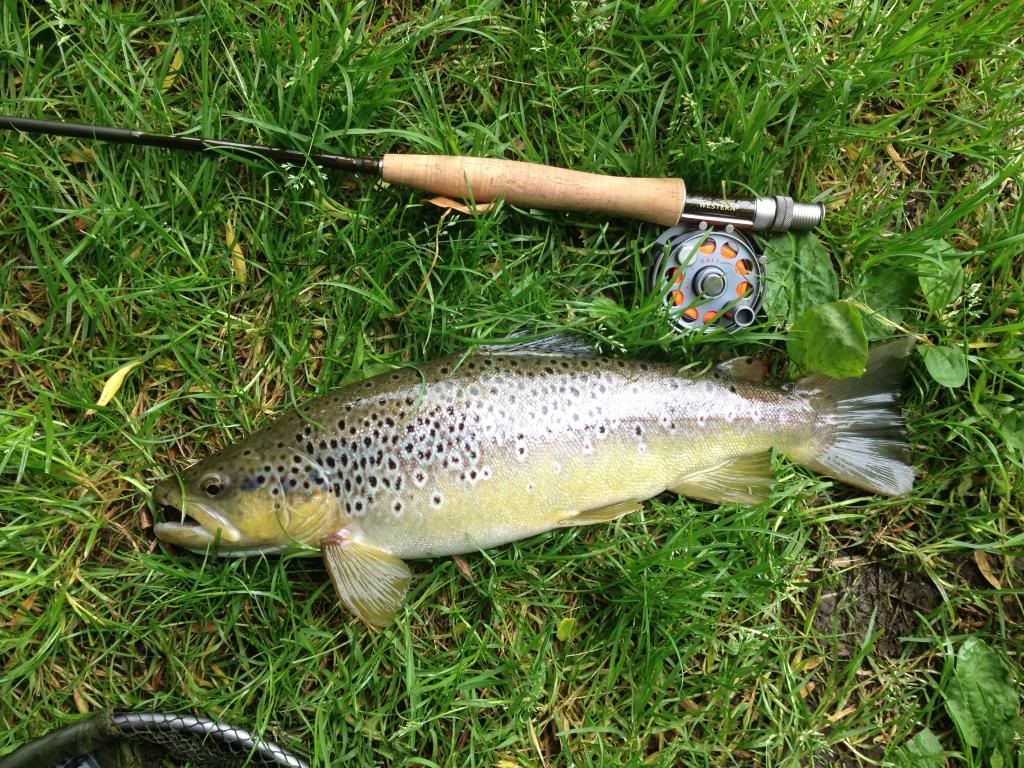 |
| This trout was in perfect condition |
 |
| I took a picture with the net so I could roughly work out the length |
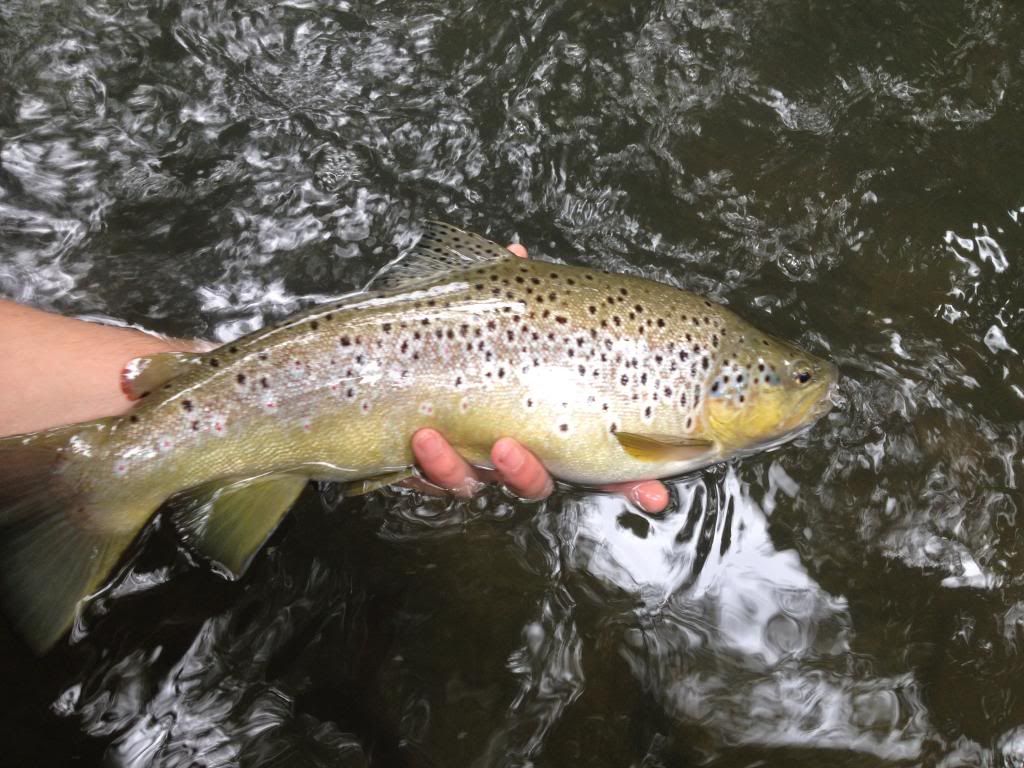
Soon after I met up with Tom Cull who had driven up from Cambridge after an invitation to fish my club water. We drove much further downstream to a beat I hadn't fished yet. Starting downstream of a small weir we worked upstream in shallow water towards the pool. Tom missed a small fish that rose to a mohican mayfly - we were a little optimistic hoping to catch on dry mayflies - once we reached the pool we changed over to the duo. After the fantastic morning I was focused on Tom having a good afternoon, Tom searched the pool and quickly caught a trout of around 8", as the fish was caught low down I was certain another could be caught in the pool despite the small size. Very quickly Tom hooked a much bigger fish, this turned out to be a belting trout of around 16", a stunning fish. After Tom released his second fish I had a go and a quick couple of casts to an area that hadn't been fished saw me land a plump fish of about 10". We moved on after that, it was a great start to the afternoon.
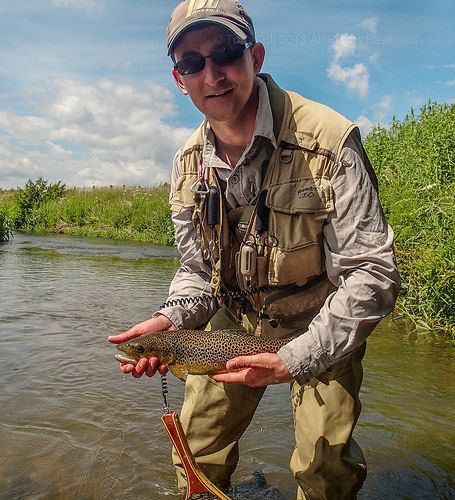 |
| Tom's belting trout |
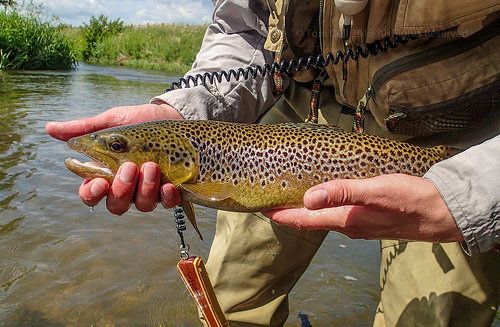 |
| A close up, an absolutely gorgeous trout |
 |
| My little'un from the same pool |
We continued up the beat fishing several nice pools and runs using the duo. Most fish came to the nymph but as the afternoon drew into the evening the surface activity increased. One of the deeper pools had two fish sipping something small; there were a few mayfly spinners around but not many ended up on the surface. After what seemed like a life time, with two fly changes and four missed takes I finally landed one of the sipping trout on one of Tom's spent mayflies.
 |
| My Daiwa hooped round on a good fish |
Further up and later into the evening we found ourselves dispensing with the duo and just fishing dries. A small pod of fish could be seen slashing and jumping at emerging caddis in a narrow run. Both Tom and I caught fish from this area. By eight o'clock we called it a day, I had been fishing since half nine that morning and Tom had had a thoroughly enjoyable afternoon. I found myself pleasantly surprised at the quality of fishing; I think we caught at least 15 fish between us fishing just over a third of mile of river.
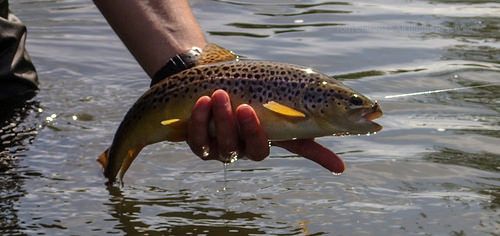 |
| One of the many fish caught, this was the average size |

